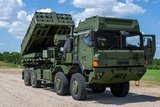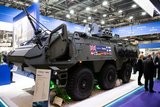TOW capabilities enhanced
Raytheon has announced that it has tested a new propulsion system for the Tube-Launched, Optically-Tracked, Wireless (TOW) missile. The enhanced system, developed by ATK, doubles TOW's range and reduces the missile's flight time by one-third.
Raytheon reported that during the test, the developmental propulsion system flew the missile more than seven kilometres (4.35 miles), reaching four kilometres (2.5 miles) in significantly less time.
Raytheon and ATK's Missile Products Group worked closely to develop a propulsion system that improves the performance of the TOW missile. The launch, boost, sustain (LBS) propulsion system also incorporates a rocket motor designed with Insensitive Munitions (IM) features to provide added safety: IM compliant systems are less likely to react explosively when subjected to bullet and fragment impacts, external fire or other hazardous events.
The TOW system has been employed by US forces in every conflict since Vietnam and continues to be used today in Afghanistan. It is a command line-of-sight system that requires the gunner to track the target until the missile impacts. The tube-launched, optically-tracked, wireless-guided (TOW) weapon system, with the multi-mission TOW 2A, TOW 2B, TOW 2B Aero and TOW Bunker Buster missiles, is the premier long-range, precision anti-armour, anti-fortification and anti-amphibious landing weapon system used throughout the world today.
More from Land Warfare
-
![Lockheed Martin to look further afield for GMARS rocket system opportunities]()
Lockheed Martin to look further afield for GMARS rocket system opportunities
The HX truck is already in use in many NATO and allied countries around the world as a logistics vehicle and carrier for high-value systems, including missile firing weapons, so its use for the Global Mobile Artillery Rocket System makes logistical sense.
-
![Beyond Survivability: How Active Protection Systems Are Empowering Commanders (Podcast)]()
Beyond Survivability: How Active Protection Systems Are Empowering Commanders (Podcast)
As threats diversify and intensify, APS are proving essential not just for vehicle protection but also for enhancing operational freedom, effectiveness and mission success in contested environments.
-
Medium knocked out of British Army LMP, with CAVS as heavyweight champion
As the British Army seeks to modernise and consolidate its diverse vehicle fleet, yet another change in direction is underway.
























